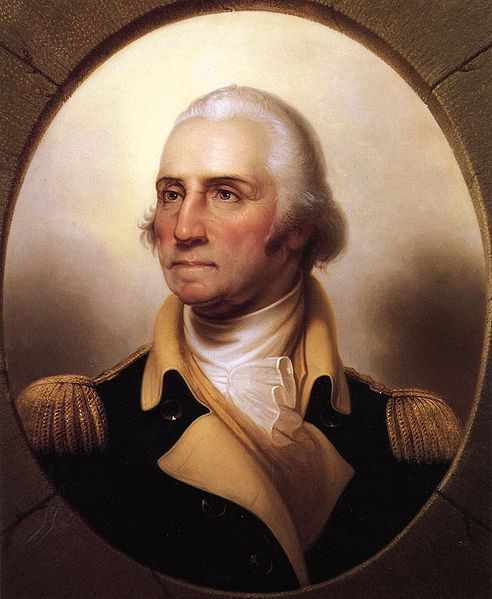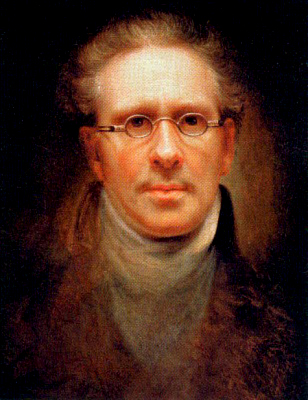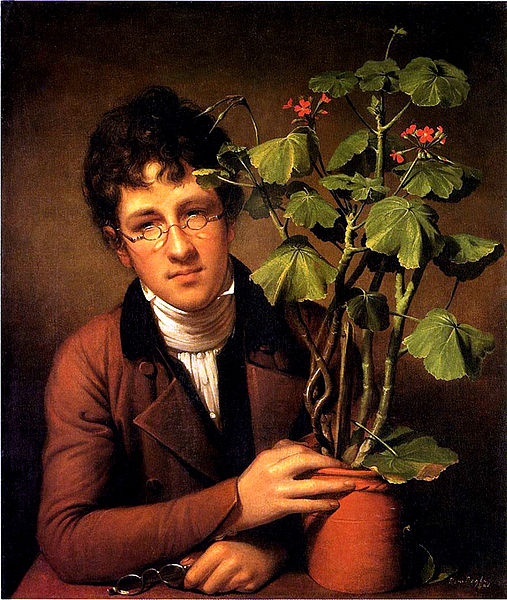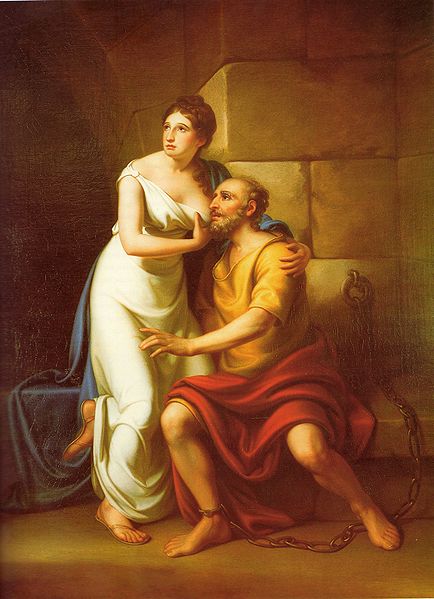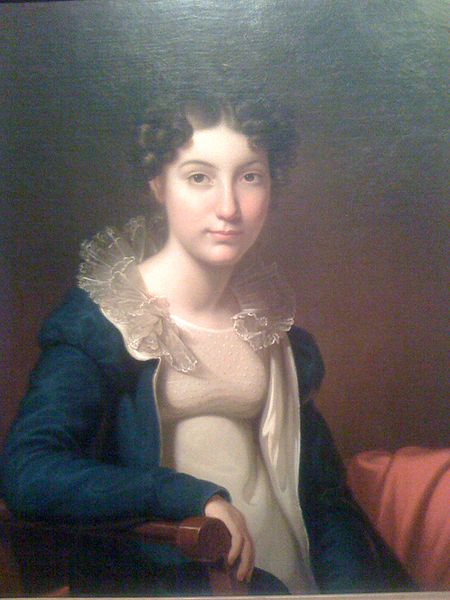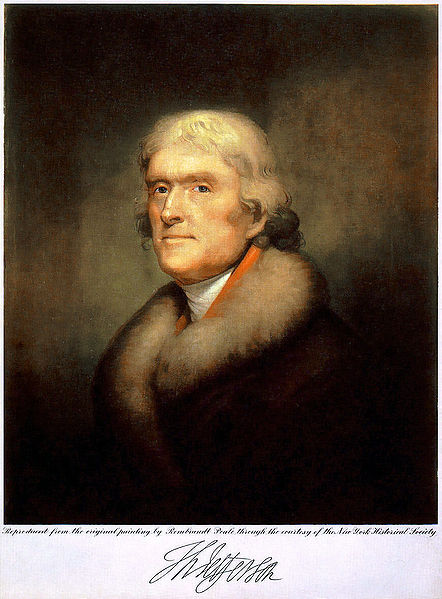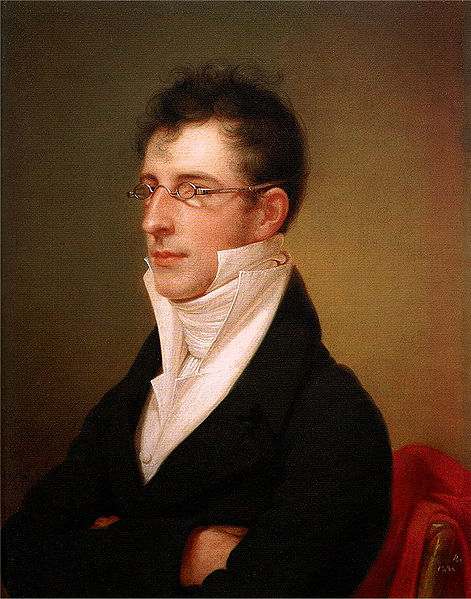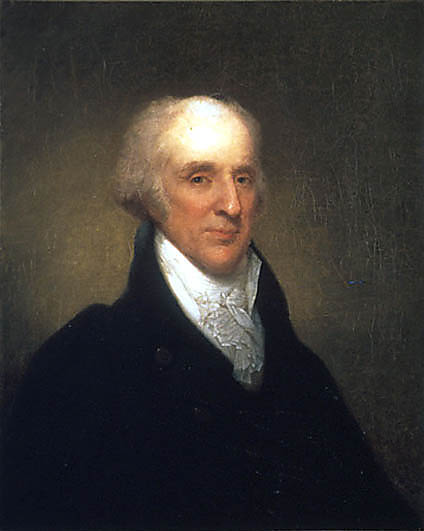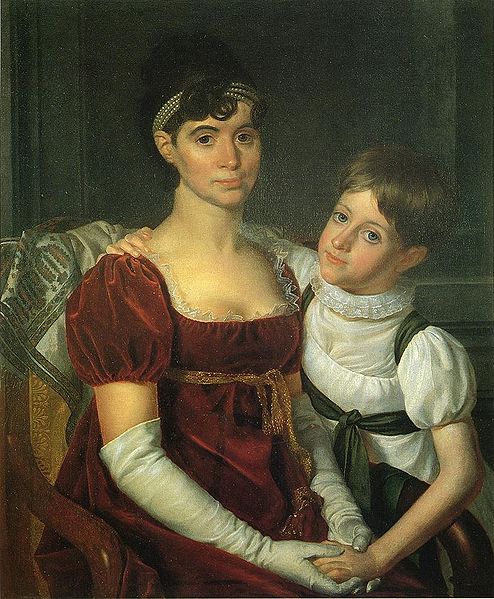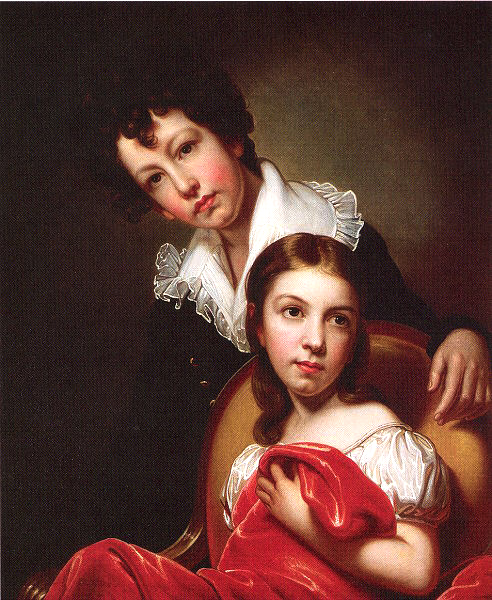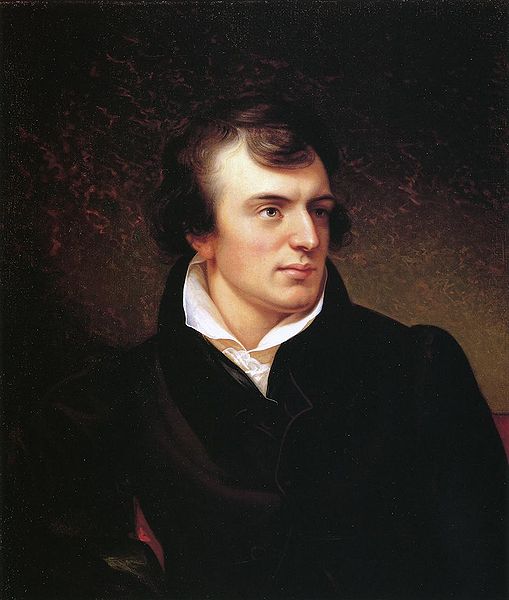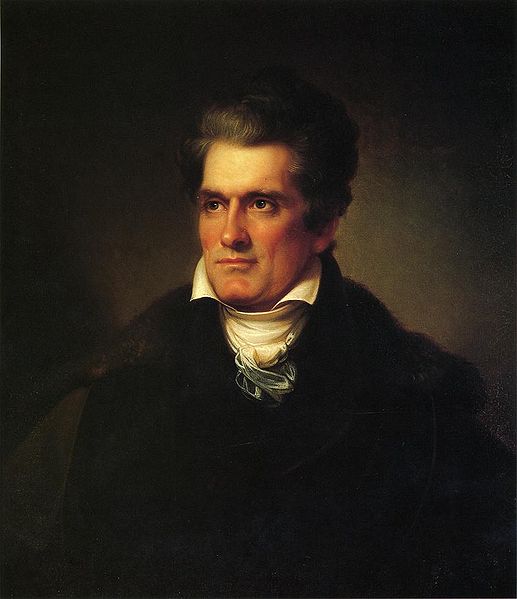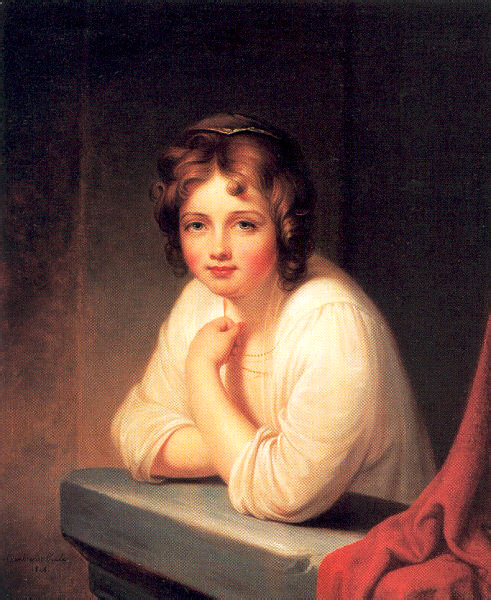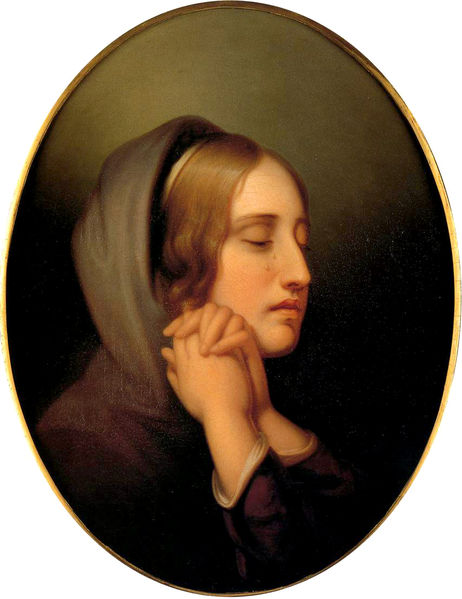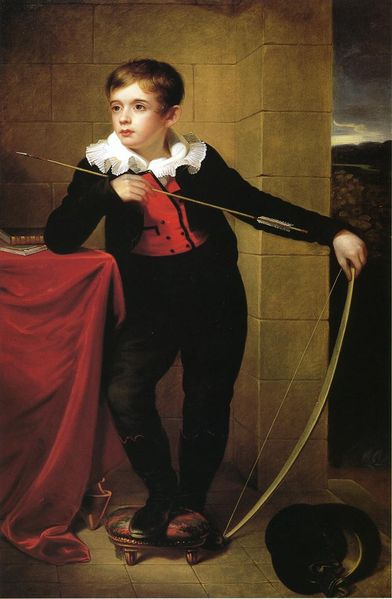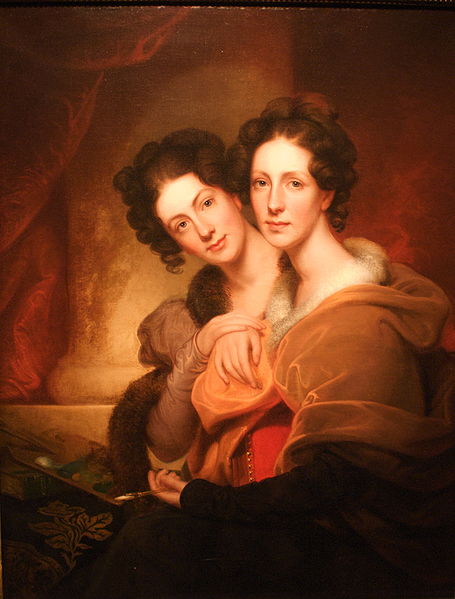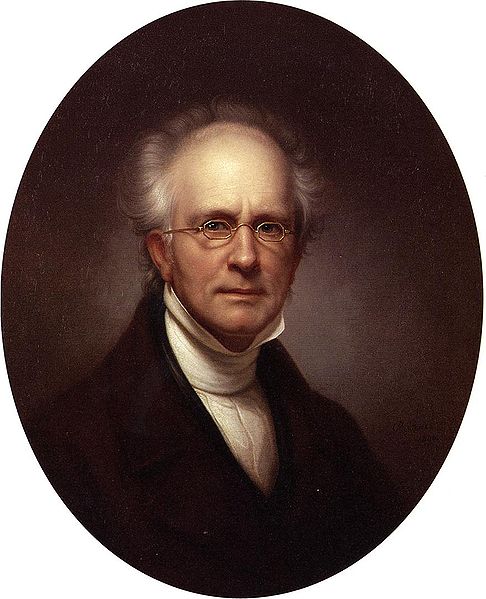<Back to Index>
- Astronomer Lambert Adolphe Jacques Quetelet, 1796
- Painter Rembrandt Peale, 1778
- King of France Charles VII, 1403
PAGE SPONSOR
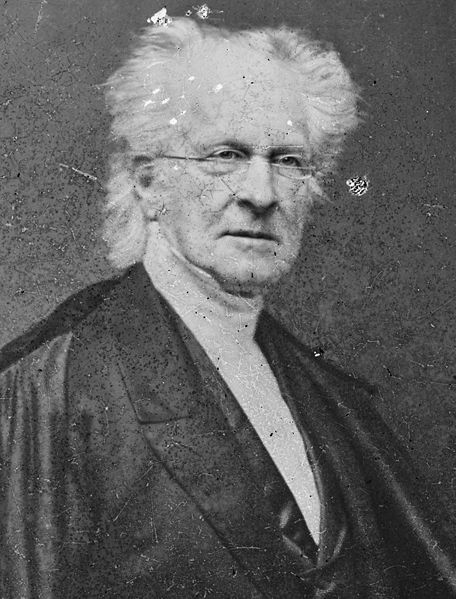
Rembrandt Peale (February 22, 1778 – October 3, 1860) was a 19th century American artist who received critical acclaim for his portraits of presidents George Washington and Thomas Jefferson. Peale’s artwork revealed the influence of French Neoclassicism.
Rembrandt Peale was born the third of six surviving children (eleven had died) to his mother, Rachel Brewer, and father, Charles Willson Peale in Bucks County, Pennsylvania, on February 22, 1778. The father, Charles, also a notable artist, taught all of his children to paint scenery and portraiture, and tutored Rembrandt in the arts and sciences. Rembrandt began drawing at the age of eight. A year after his mother’s death and the remarriage of his father, Peale left the school of the arts, and completed his first self-portrait at the age of 13. The canvas illustrates the young artist's early mastery. The clothes, however, give the notion that Peale over-exaggerated what a 13 year old would look like, and Peale's hair curls like the hair of a Renaissance angel. Later in his life, Peale "often showed this painting to young beginners, to encourage them to go from 'bad' to better..."
In July of 1787, Charles Willson Peale introduced his son Rembrandt to George Washington, and the young aspirant artist watched his father paint the future president. In 1795, at the age of 17, Rembrandt painted an aging Washington, making him appear far more aged than in reality. It did, nevertheless, garner praise and Rembrandt had made his debut.
At the age of 20, Rembrandt married 22-year-old Eleanor May Short (1776 – 1836) at St. Joseph's Catholic Church in Philadelphia. During their marriage, Rembrandt and Eleanor had nine children: Rosalba, Eleanor, Sarah Miriam, Michael Angelo, and Emma Clara among them.
In
1822, Peale moved to New York City where he embarked on an attempt to
paint what he hoped would become the "standard likeness" of Washington.
He studied portraits by other artists including John Trumbull, Gilbert Stuart and his own father, as well as his own 1795 picture which had never truly satisfied him. His resulting work Patriae Pater,
completed in 1824, depicts Washington through an oval window, and is
considered by many to be second only to Gilbert Stuart's iconic
Athenaeum painting of the first president. Peale subsequently attempted
to capitalize on the success of what quickly became known as his
"Porthole" picture. Patriae Pater was purchased by Congress in 1832 and still hangs in the U.S. Capitol. Later on, Peale made over 70 detailed replicas of the same "father of our country", the first President of the United States.
Peale continued to paint other noted portraits, such as those of the
third president Thomas Jefferson while he was in office (1805), and
later on a portrait of Chief Justice John Marshall. Throughout
his entire life, Peale traveled across the Western Hemisphere in search
for a better life as an artist. Noted for his "itinerant" nature, Peale
visited Europe several times to study art. His father helped pay
his way to Paris, where he stayed from June to September 1808, and
again from October 1809 to November 1810. While Peale was in Paris, Jacques Louis David's art influenced him to paint in the Neoclassical style. He painted the famous explorer Alexander von Humboldt and several other noted patrons such as Joseph Louis Gay-Lussac and François André Michaux.
After his successes in France, Peale returned to Philadelphia in 1810.
His efforts to establish his knowledge and mastery of art were
displayed in his painting The Roman Daughter (1812). While the economy was suffering financially during the War of 1812,
President Jefferson promised to buy the 1795 portrait of Washington,
but could not keep his promise, and instead encouraged Peale to go to
Europe, as "we have genius among us but no unemployed wealth to reward
it". In
1828 an ambitious Peale raised funds and tried earning money for his
previous paintings, in order to travel to Rome. By the time he had
enough money, he decided to take his 15 year old son, Michael Angelo, a
determined young artist who copied his father's paintings in admiration. Peale successfully displayed portraits of Horatio Greenough and Patriæ Pater in Florence Academy. Motivated by his father’s establishment of the American Museum of Philadelphia (1786)
and having been unsuccessful in Philadelphia, Rembrandt Peale assumed
his father’s role in another city. On August 15, 1814, Peale launched
his first museum as soon as he arrived in the municipality of Baltimore, Maryland.
Originally premeditated as an Arts and Sciences museum, Peale decided
to display only works of art and manufactured products instead. The museum was elaborately illuminated by gas light, following the example of his brother Rubens in
Philadelphia. This innovation made a great impression. Peale had
acquired an important gas lighting patent, and with some associates
founded the successful Gas Light Company of
Baltimore. Having poor business sense, though, he did little to manage
the company and was forced out after a few years due to the War of 1812.
In 1824 Peale painted the Patriæ Pater,
in which a rectangle supporting an oval wreath surrounds the
eye-catching image of George Washington. The most successful painting
of Peale's 50-year career, it inspired John Marshall to
have his portrait done by Peale in the same fashion. The painting was
criticized as lacking authenticity, as it was not completed until after
Washington's death (1799). Nonetheless, Peale received commendations
for his portrait by many noted politicians such as Washington’s nephew,
Judge Bushrod Washington, who was an associate U.S. Supreme Court Justice, and Marshall.
In 1801, Rembrandt painted a portrait of his brother Rubens,
youngest of the six Peale children, who always had an admiration for
gardening and tending to natural life. Rembrandt seated his brother
next to a geranium. The painting signifies the artist’s admiration for a sibling’s love of nature, and may have been inspired by the Dutch 17th century artist, David Teniers the
Younger, who had painted a series of oil-on-copper paintings
representing the five senses. His painting, "Smell" is quite similar to
Rembrandt Peale’s work of art, which depicts a man looking over at
another individual admiring a flower pot. Rembrandt's piece captures
the essence of a young gardener / artist’s peace of mind, gracefully
looking out, a posture of wonder and calmness.
Peale's neoclassical painting The Roman Daughter was deemed too “sensational” by the people of Philadelphia, who were unsympathetic to his endeavors toward “improving the state of fine arts in America” in the 19th century. The
painting depicts a young girl shielding her father, a prisoner in
chains. This piece demonstrates compassion and graceful defense; his
copy of Correggio's Angel, and his Court of Death revealed the same artistic style.
A painting of a comedian who was an acquaintance of the British painter George Clint — an
artist whose style resembled Peale's, and who claimed the picture as
his own — was examined by the National Portrait Gallery of London in
1914. It was initially confirmed as Clint’s artwork. Later, the gallery
further examined the history behind the painting: the English comedian,
Charles Mathews, had arrived in New York in 1822, and left shortly
after Peale had welcomed him for a portrait painting.
Recognized by American presidents George Washington and Thomas Jefferson, Chief Justice John Marshall,
and John C. Calhoun, Rembrandt Peale was one of the most prolific
political painters of his era, having completed over 600 paintings. He
died June 12, 1860 in Philadelphia. His paintings are in many public
collections.
